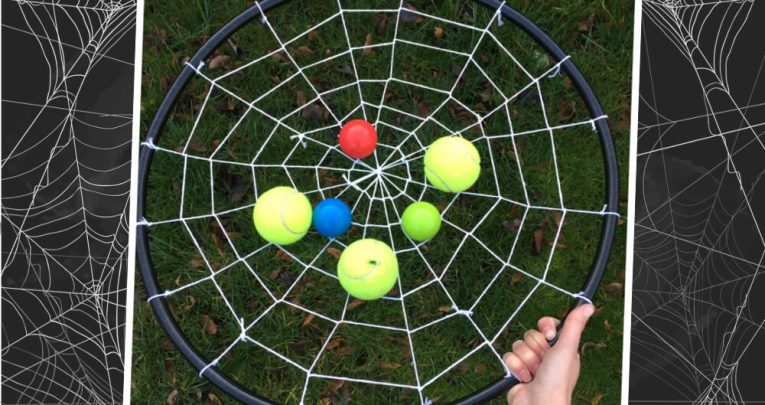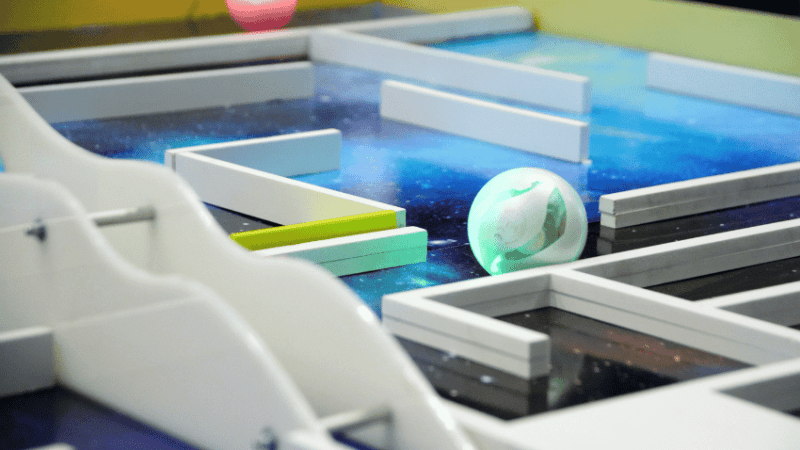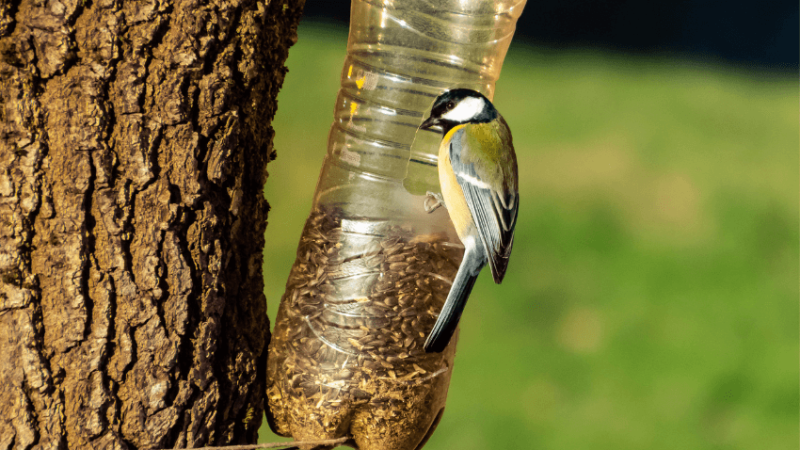Teach engineering by creating a spider’s web with a hoop and string

How easy is it to make a good spiderweb? Emily Hunt shows you…

- by Emily Hunt
- Author of the 15-Minute STEM series and freelance STEM writer Visit website

You will need
- A hula hoop
- String or wool
- Scissors
- A timer (optional)
- Small balls (eg tennis balls)
- Optional: spray bottle and water
How to do it
- Begin by outlining the activity: the children will have just 15 minutes (time limit optional!) to create a ‘spider web’ within the hoop that will be able to hold ‘prey’ (small balls).
The success of the web will be defined by how much prey the web can capture and keep. So that means the web needs to catch the balls without them falling through the string or wool and onto the ground below.
- Start the timer and begin to create your web. Use wool or string to thread your web within the hoop.
Hint: first, wrap the thread around your hoop as though you are creating bicycle spokes. Then create circles within your hoop by wrapping the thread around the ‘spokes’.
- Time is up! Hold your web horizontally and ask a partner to gently throw the ‘prey’ into the middle. How many items of prey can your web hold? How could you improve your web so it could hold more prey?
Investigate
Take a closer look at the architecture of the spider webs in your natural environment. Spray a fine mist of water using a clean spray bottle to make a web’s fine details stand out (this will not harm the web).
What are we learning?
The frosty early spring weather is an excellent opportunity to appreciate the amazing architecture of spider webs. Spiders often use webs to catch their dinner. A classic orb web is shaped like a bicycle wheel, perhaps like the web you have created.
Unlike yours, each web takes about two hours to complete and is made of spider silk, spun from spinnerets on the spider’s abdomen.
Spider silk has a high tensile strength, so it is not pulled apart by a heavy weight. Weight for weight, spider silk is stronger than steel.
It also has good extensibility, meaning it is able to stretch a long way without breaking.
Because of these properties, humans are interested in creating artificial spider silk for uses such as clothing, military body armour, parachute material, and for repairing ligaments (the connective tissue between bones).
Emily Hunt is a primary school teacher and author. She blogs about STEM education on her website howtostem.co.uk and is the author of 15 Minute STEM (£16.99, Crown House Publishing). Follow her on Twitter at @HowtoSTEM.










